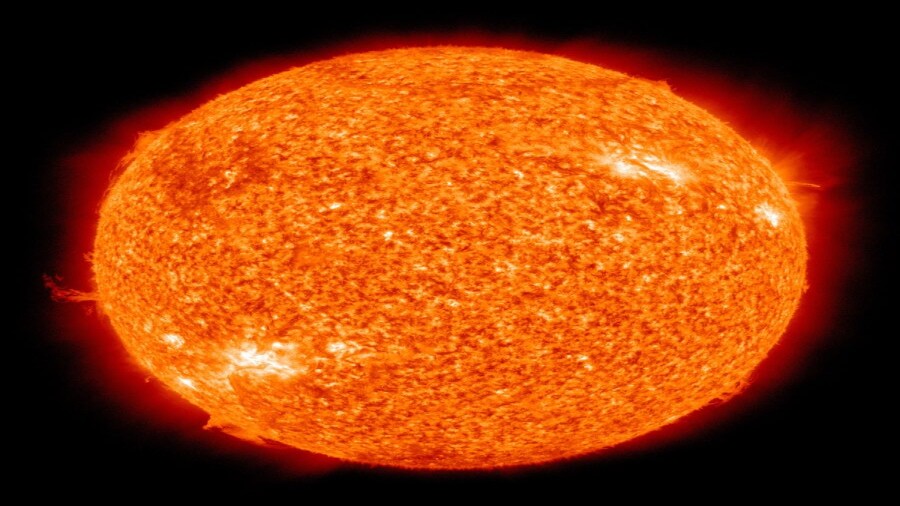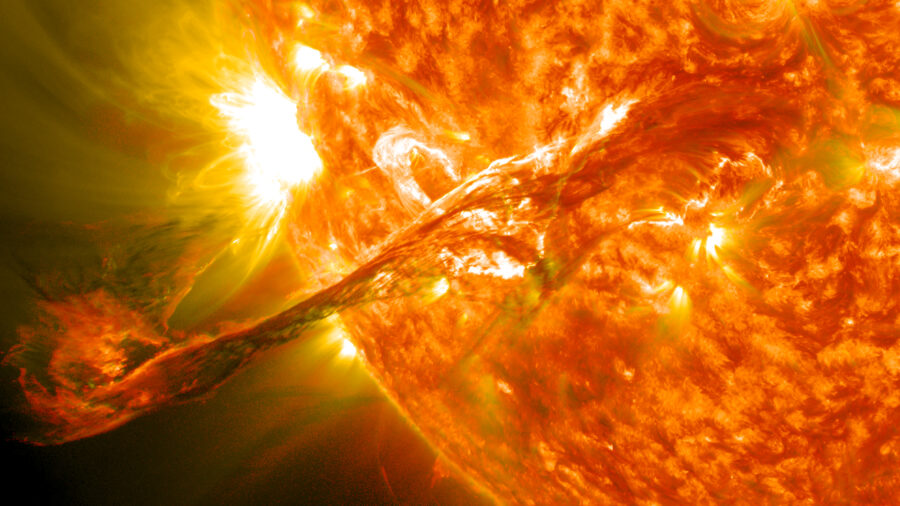Scientists Brace For A Terminator Sun Event
Solar researchers refer to overlapping Solar Cycles as a Terminator event, a period of increased sun activity with more, and stronger, solar flares, with the next one arriving in 2030.
This article is more than 2 years old

The sun is going to explode, but don’t worry, it’s not as bad as it sounds, instead it’s just a Terminator event. While that also doesn’t sound reassuring, reporting from Newsweek explains this is just the natural result of a solar cycle, which runs for roughly 11 years. Doomsday events are ever present in fiction, and scientific journals, but a terminator sun event is not one of them, hopefully.
As the solar cycle matures, the sun generates more sunspots, areas on the surface of the star with twisted magnetic lines and increased levels of energy being held back as a result. When the magnetic lines release, the resulting release of energy is called a solar flare, expelling massive amounts of radiation into space in one sudden, violent burst. Terminator events occur when two solar cycles overlap, as one ends and other begins, creating a significantly greater number of sunspots, and as a result, more solar flares.
Solar flares that occur while the sun is perfectly aligned with the Earth can disrupt the magnetic field and even interfere with electronics on the surface. Only the most intense of solar flares have noticeable effects, even those that occur during Terminator Events, with five different levels to measure the strength of each flare. A-class is the weakest, with B-Class, C-Class, M-Class, and X-Class exponentially more powerful.
The last Terminator event took place in December 2021, with an example of 115 sunspots on December 12th, resulting in a M1 solar flare and a C6 flare. Bob Learmon, a solar scientist at the University of Baltimore-Maryland County, explains that “We found that the longer the time between Terminators, the weaker the next cycle would be. Conversely, the shorter the time between Terminators, the stronger the next solar cycle would be.”

Currently the sun is in Solar Cycle 25, with the next solar maximum expected to be reached in 2025, followed by the Termination event in 2030. That is only an estimate though, as scientists are closely watching how Solar Cycle 25 unfolds over the next few years. If the cycle matures ahead of schedule, the next Termination will arrive sooner and hit harder, but if it slows down, than that will decrease the impact of the solar flares.
Solar Cycles and solar flares have been used in sci-fi movies for years as catastrophic events, most notably in the Nicolas Cage film, Knowing, which, and this is a spoiler for a 13 year old film, ends with a massive solar flare annihilating all life on Earth. The odds of a solar flare with the strength to ignite the atmosphere and unleash enough radiation in one violent outburst, is slim, it’s not zero, but it’s almost zero.
Overlapping Solar Cycles, creating Terminator events, were first theorized in 1903 by William Lockyer, which explains why in 2022 we are at the start of the 25th Solar Cycle. Scientists are not in agreement over Terminator events, with some astronomers believing that the last cycle was exceptionally weak as expected, while others think the traditional model of measurement is flawed and not capturing the sun’s activity correctly. No matter which group is correct, rest assured that it is very unlikely the Sun will explode during our time here on planet Earth, it’s not a zero percent chance, but it’s unlikely.










